If you’ve ever tried using electronics in very cold weather you might have observed your battery draining quickly.
When trying to capture footage on a GoPro in the mountains during winter you might have seen this too, or even had issues getting the camera to even turn on.
GoPro recently announced a new high-performance Enduro battery designed for cold temperatures. The bad news? It’s currently only available for HERO10 and HERO9 action cameras.
In a few weeks time I’ll be heading to the Alps to capture some ski footage (more on that to follow on the blog soon), so designing a setup that could be kept warm for a full day up the mountain was vital.
Why batteries drain quickly cold weather
Batteries use a chemical reaction to make power. Since chemical reactions slow down in cold weather, chemical reactions don’t happen as quickly. That means the battery can’t generate as much power when compared to warmer temperatures.
The reverse is true hot temperatures. The chemical reactions will increase and the battery may over-perform. Because of this, high temperatures for prolonged periods can actually shorten battery life, as the chemical reactions occur faster.
There is also another reason. As the temperature drops, the internal resistance of your battery goes up. That means more of your battery’s power is wasted – so your battery has to work harder. Hence, you’ll see the charge go down much faster than if you stayed inside.
In very cold temperatures, this can result in the battery being not able to generate enough power and in these cases the camera won’t turn on at all.
So the way to ensure this doesn’t happen it to keep the battery warm.
Insulating the GoPro MAX
The MAX poses some unique challenges when trying to keep the body insulated, and therefore the battery warm.
The GoPro HERO camera bodies can be easily covered in an insulating jacket to protect it from the external conditions.
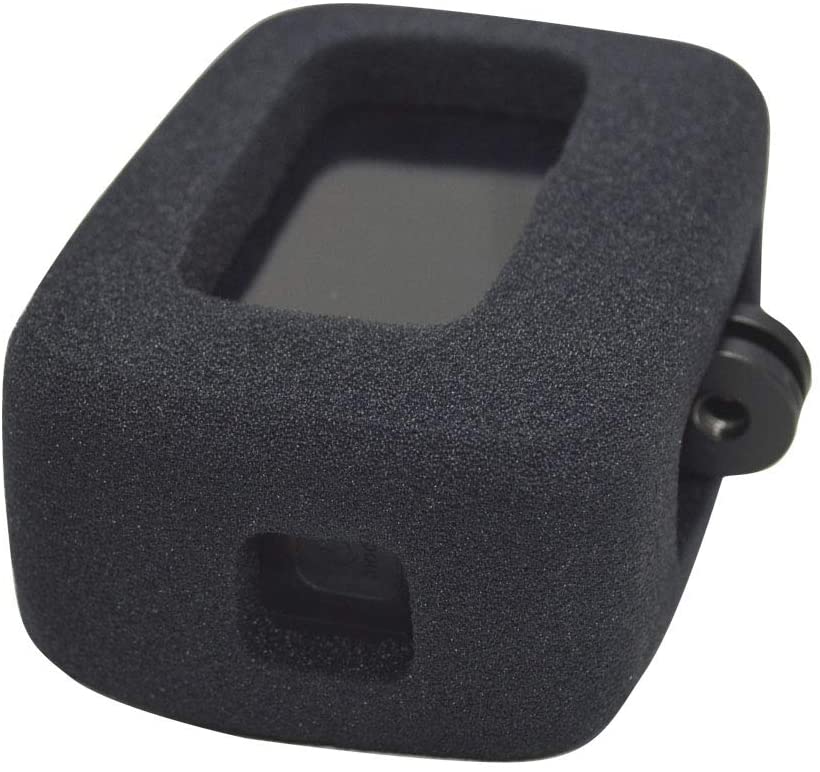
Various covers, like microphone wind protectors for HERO camera illustrate how thick the cover can be before it encroaches into the lenses field of view.
In very cold temperatures you could include heat warmers inside the jacket, on the back of the camera, to increase the internal temperature.
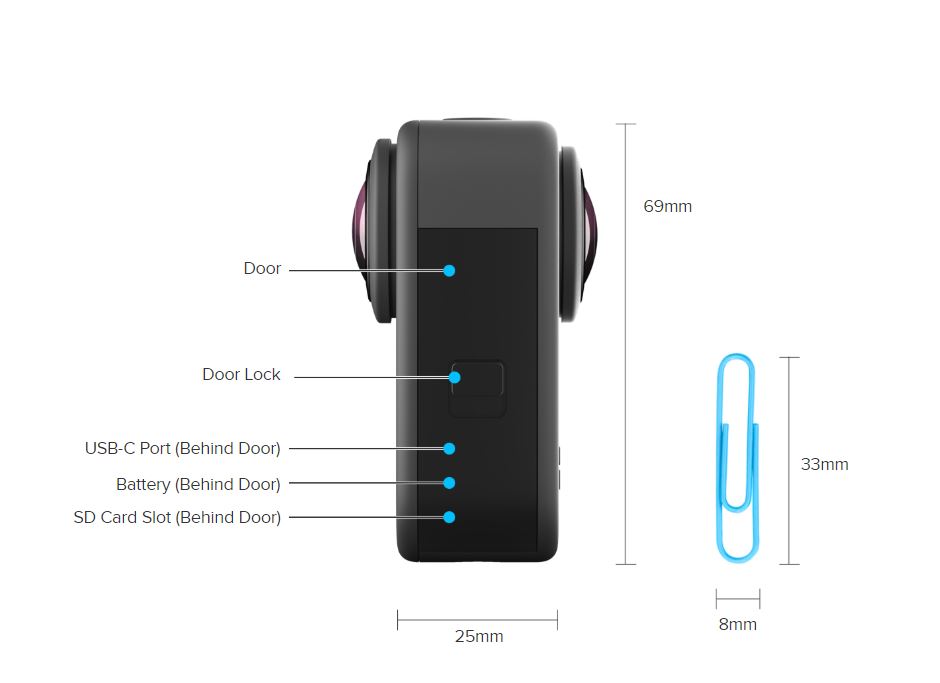
A similar approach is not possible with the MAX. As you can see above, there is only a small space on the front and back of the camera’s body before any jacket will impede the view (about 2mm). And the front of the camera is most exposed to the elements.
There is more area around the top, bottom, and sides of the camera, where there are blind spots, but it is not particularly effective to insulate solely in these areas.
I realised quite quickly, that for optimum conditions I would need to rely on an external battery power source that could be kept warm more easily.
Using an External batter GoPro MAX Insulation
It is possible to use an external power source with the MAX. We actually recommend using one with our Trek Pack for long hikes to reduce the reliance on expensive GoPro batteries.
The advantage of using an external pack means not only can it be kept warm more easily, but also offers more power.
I have an Anker PowerCore+ 26800mA. Official GoPro MAX batteries are 1600mA. So the PowerCore+ holds almost 17x more charge then the standard MAX battery.
In warm conditions, we can get about 2-2.5 hours out of a single GoPro battery in video mode, therefore, I should be able to easily use the PowerCore to shoot continuously for an entire day if I can keep it warm.
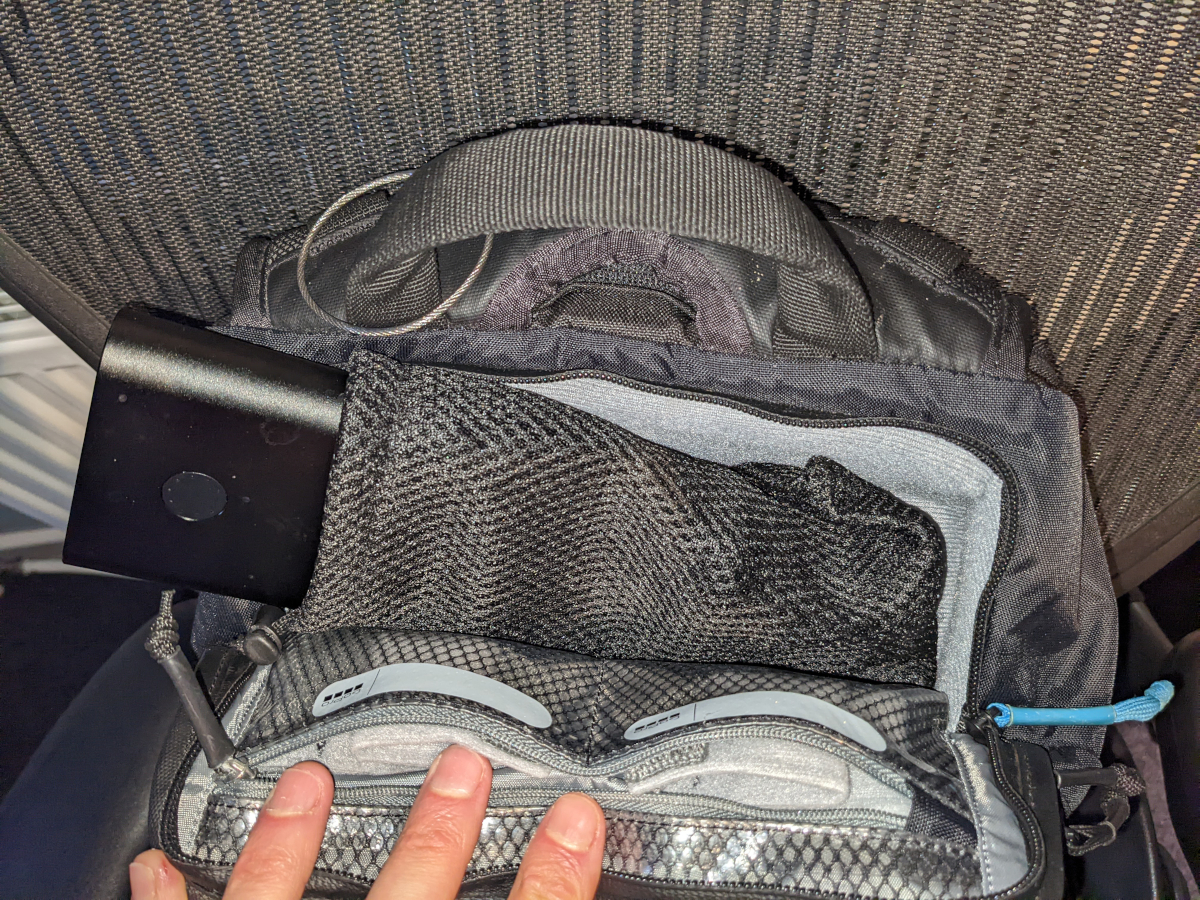
The Trek Pack has a useful top pocket which perfectly fits the PowerCore and has room for an electronic hand warmer (here’s the electronic one I use). To further insulate it, I place it in a thick fleece pocket.
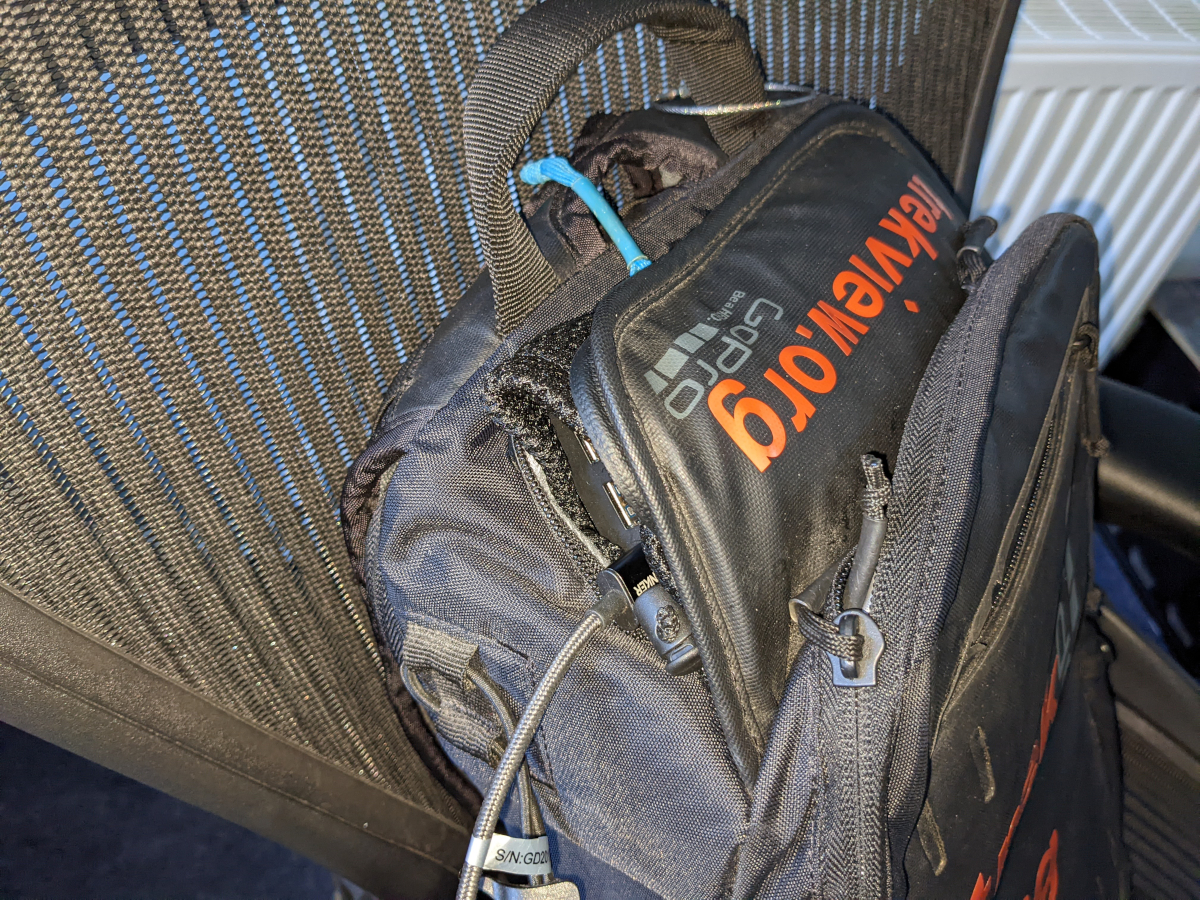
I can zip the pocket almost shut to protect the battery from the weather, leaving it slightly unzipped to run the USC-A (from the Powercore) to USB-C (to the MAX) out.
The cable I use is 0.9m long. Here is the exact one I use if you’re wondering.
0.9m is about perfect for running it to a MAX mounted on a helmet, offering just enough slack to allow for lots of movement, whilst not being too long to risk getting easily caught on anything. That said, I’d be very careful of branches when tree skiing.
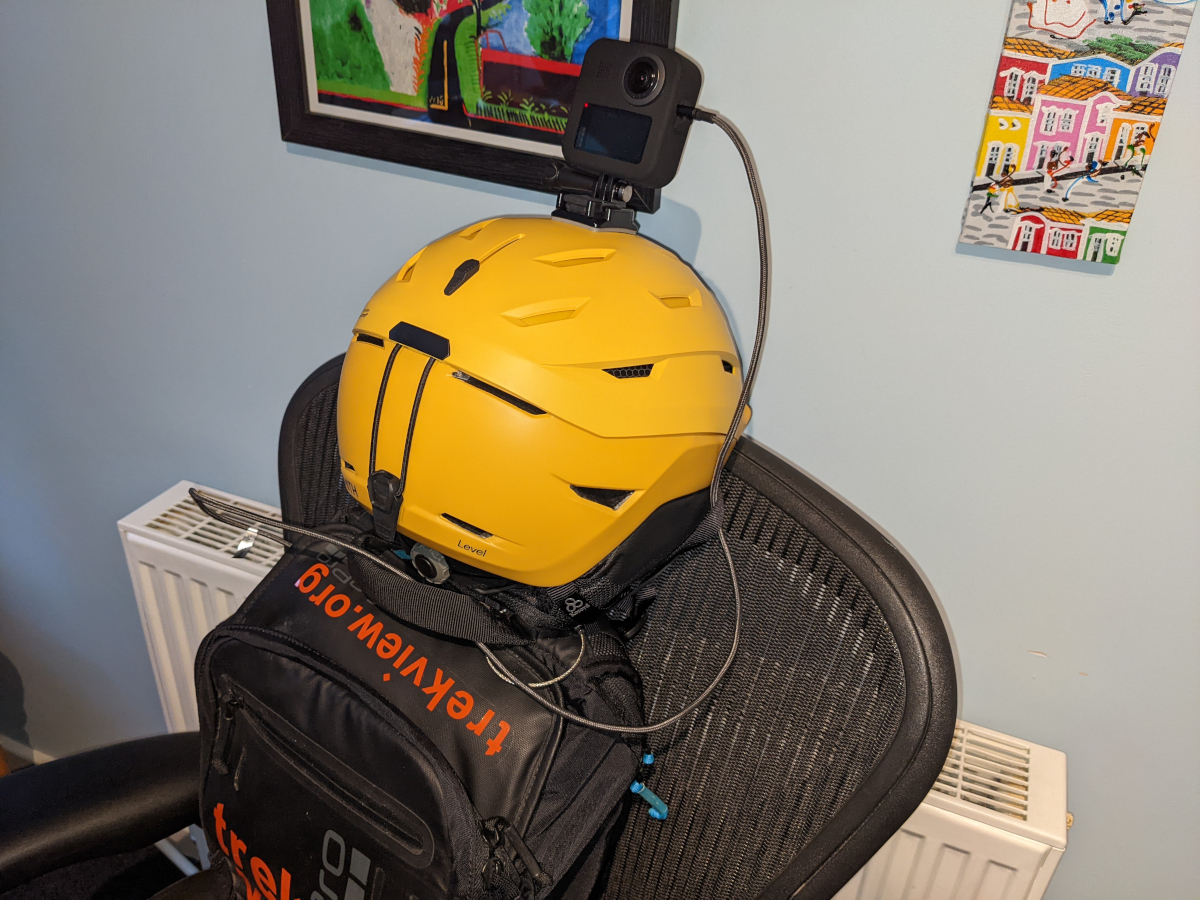
I use a Smith Level MIPS helmet. It is perfect for this use as I can run the cable through the straps of the helmet. This keeps the cable more flush with the helmet and in the side view of the camera, where there are blind-spots.
Connecting the USB cable to the MAX
Running a cable into the camera poses another problem. The protective door of the camera needs to be removed. This exposes the battery bay, MicroSD card reader and internals of the camera to the elements.
In searching for insulation options for the MAX I came across a silicone case. It’s only about 0.3mm thick and offers minimal insulation, however, it does prove very useful in offering some weatherproofing.
![]()
I needed to make a hole in the silicon case to make an opening for the cable. I did this using a cheap leather hold punch. Yes, it could be made to look a lot nicer.
![]()
The hole is slightly smaller then the diameter of the end of the cable, which makes for a snug fit. The snug git means the silicone also helps hold the cable securely in place (whilst still offering quick release for safety, should the cable get caught).
I have also added some cardboard padding to keep the battery in place, as there is a slight air-gap between the case and battery when the door is removed.
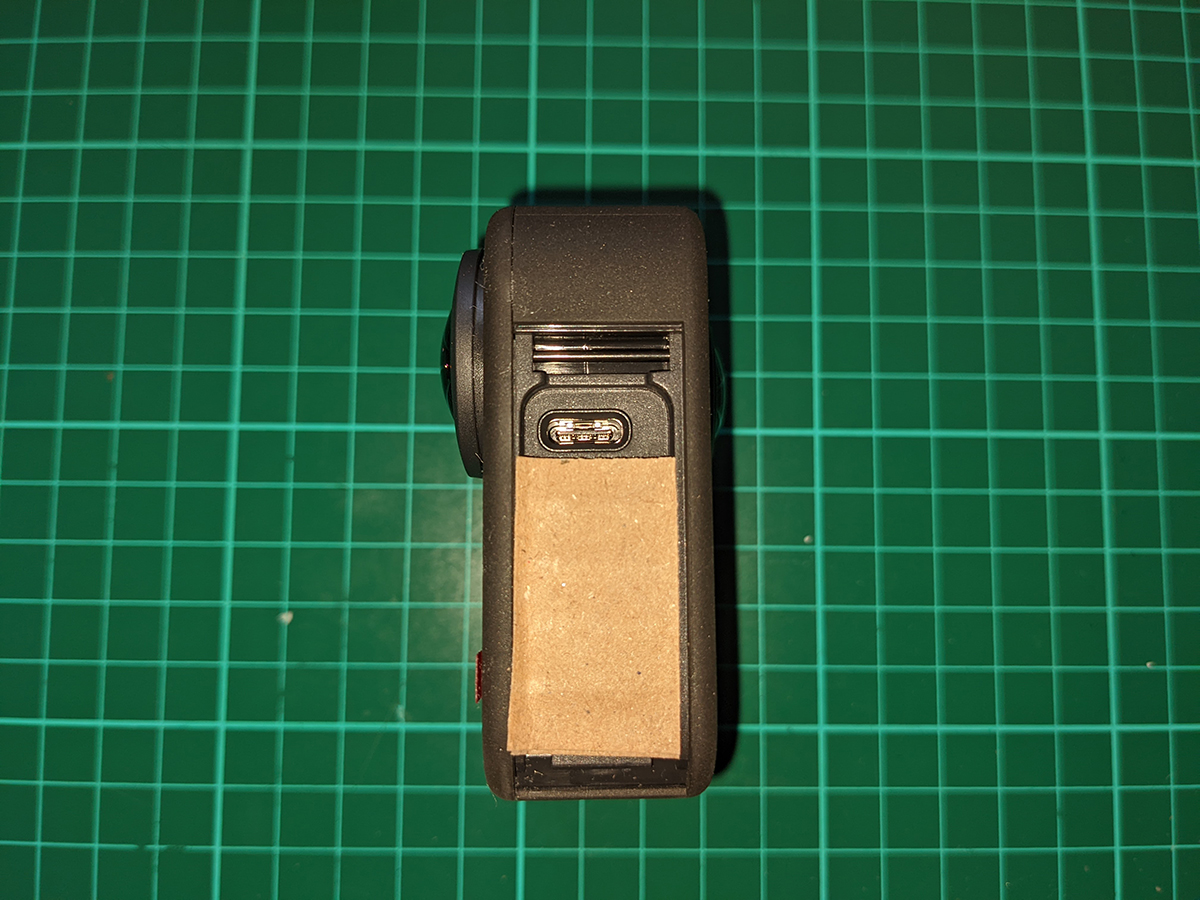
Once the camera has been encased you shouldn’t need to take it off at all (there is no need to fiddle with the cardboard and case each time). The images and video from the SD card can be downloaded and managed by connecting the camera to your laptop.
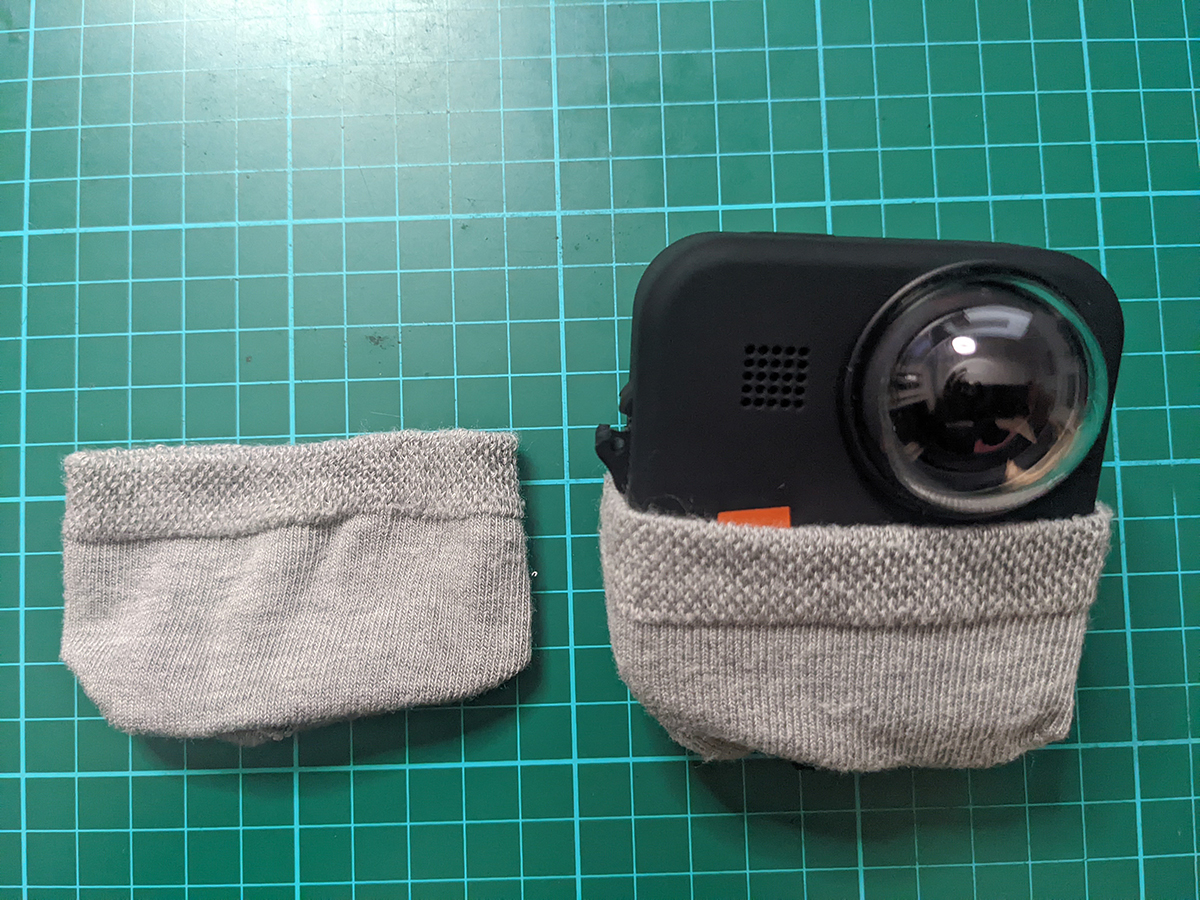
The final touch comes courtesy of my mum, Alison Greenwood. In order to provide some minimal protection for the screen from the elements she offered to sow up a sock that is just thin enough (about 1mm) to avoid obstructing the lenses field of view whilst offering a small amount of insulation and protection for the screen.
Why I use this setup for skiing
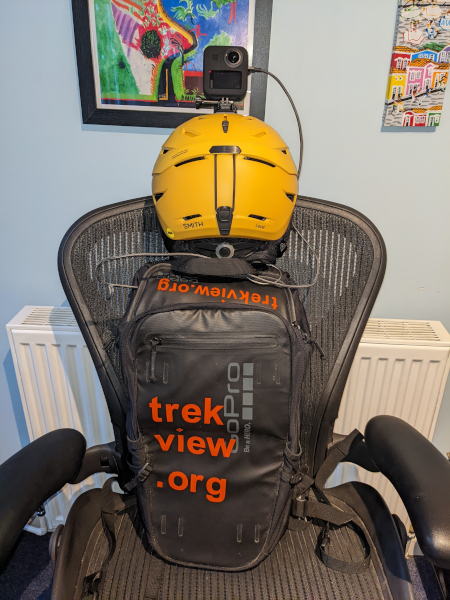
I designed this setup to offer a full day of battery life, requiring minimal attention when on the mountain.
Paired a GoPro remote in my pocket I can start and stop recording easily, even with mitts on. There is no need to switch out batteries that can be fiddly at the best of time.
It can also be easily used on lifts. The backpack profile is slim enough so it can be worn whilst sitting on the lift, and the helmet mount clears most lift bars without needing to duck each time.
The real test comes when I make it to the mountains. Bring it on!
We're building a Street View alternative for explorers
If you'd like to be the first to receive monthly updates about the project, subscribe to our newsletter...


